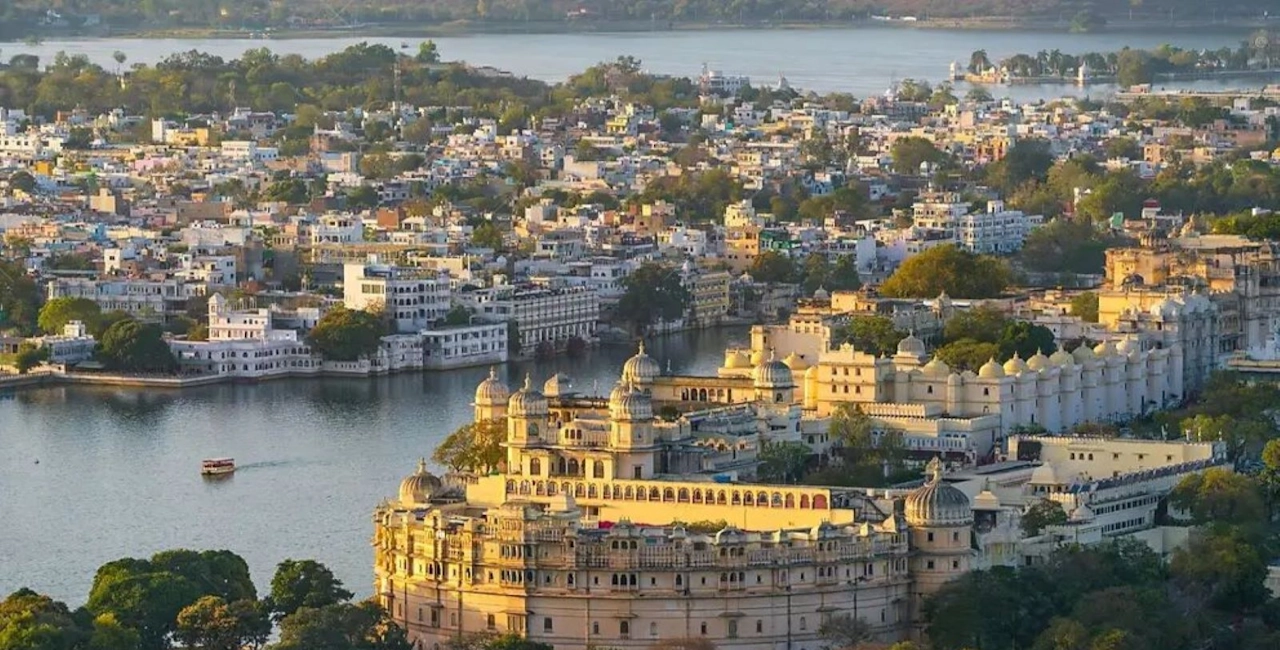Udaipur, famously known as the “City of Lakes,” is one of the most enchanting and romantic cities in India. Nestled in the Aravalli hills of the state of Rajasthan, Udaipur is renowned for its majestic palaces, tranquil lakes, and rich cultural heritage. The city’s charm lies in its harmonious blend of natural beauty, royal architecture, and vibrant history, making it a top destination for travelers seeking an immersive experience of India’s royal past.
The City of Lakes
The shimmering lakes of Udaipur give the city its distinctive identity and its romantic ambiance. The most famous among them is Lake Pichola, an artificial lake created in 1362 AD, around which the city of Udaipur is built. The lake’s calm waters reflect the beauty of the surrounding palaces, temples, and ghats, providing a perfect backdrop for evening boat rides.
In the middle of Lake Pichola lies the Lake Palace, now a luxurious hotel, which appears to float on the water. The palace was originally built in the 18th century by Maharana Jagat Singh II as a summer retreat for the royal family. Its marble architecture, surrounded by the vast expanse of the lake, creates an ethereal setting that is breathtaking at sunset.
Fateh Sagar Lake is another iconic waterbody in Udaipur, known for its peaceful setting and stunning views of the surrounding hills. Dotted with small islands and fringed by scenic gardens, Fateh Sagar is a popular spot for picnics, boat rides, and leisurely walks along the lake’s promenade.
Jaisamand Lake, one of the largest artificial lakes in Asia, is located about 48 kilometers from Udaipur. Surrounded by marble temples and cenotaphs, this lake is not only a beautiful sight but also a reminder of the region’s engineering marvels. Udai Sagar Lake and Rajsamand Lake are other notable water bodies that add to Udaipur’s reputation as the “Venice of the East.”
Palaces and Royal Heritage
Udaipur’s palaces are among the finest examples of Rajputana architecture, showcasing the opulence and grandeur of Rajasthan’s erstwhile rulers. The most prominent of these is the City Palace, a massive complex situated on the banks of Lake Pichola. Built over several centuries by successive Maharanas, the palace is a stunning fusion of Mughal and Rajput architecture. Its elaborate balconies, towers, and courtyards offer panoramic views of the city and its surrounding lakes.
The interiors of the City Palace are equally impressive, with rooms adorned with intricate mirror work, murals, and inlaid tiles. The palace museum houses a rich collection of royal artifacts, including weapons, paintings, and sculptures, giving visitors a glimpse into the grandeur of Udaipur’s royal heritage.
Another magnificent palace is the Monsoon Palace, perched on a hilltop overlooking Udaipur. Built by Maharana Sajjan Singh in the 19th century, this palace was intended to serve as an astronomical center and a place for the royal family to enjoy the monsoon rains. Today, it offers panoramic views of the city, its lakes, and the surrounding Aravalli hills, making it a popular spot for watching sunsets.
The Jag Mandir Palace, located on an island in Lake Pichola, is another architectural marvel. Often referred to as the “Lake Garden Palace,” it was built by Maharana Karan Singh II in the 17th century. Jag Mandir served as a refuge for Mughal emperor Shah Jahan, and it is believed that the palace’s design later inspired the Taj Mahal.
Cultural Vibrancy
Udaipur is not just about royal palaces and serene lakes; it is also a hub of art, culture, and festivals. The city is famous for its traditional Rajasthani folk music and dance forms, such as the Ghoomar and Kalbeliya, which are performed during festivals and cultural events. The city also has a thriving art scene, with local craftsmen producing exquisite miniature paintings, Pichwai art, and Rajput-style murals.
One of the most significant festivals celebrated in Udaipur is Mewar Festival, which marks the arrival of spring. The festival is a grand spectacle of Rajasthani traditions, with colorful processions, folk music, and dance performances that culminate in the immersion of deities in Lake Pichola. The festival coincides with Gangaur, a celebration dedicated to the goddess Gauri, during which women dress in traditional attire and pray for marital happiness.
Cuisine of Udaipur
Udaipur’s cuisine is an essential part of its cultural identity, with a range of royal Rajasthani dishes to offer. The city is famous for its rich and flavorful dal baati churma, a traditional dish of lentils, baked wheat balls, and sweetened wheat. Other popular dishes include gatte ki sabzi (a gram flour curry), laal maas (spicy mutton curry), and kheema baati (spiced minced meat in a baked wheat ball).
The street food scene in Udaipur is also vibrant, with stalls offering mouth-watering snacks like kachoris, mirchi vadas, and pyaaz ki kachori. For dessert, malai ghewar (a honeycomb-like dessert soaked in syrup) and moong dal halwa are local favorites.
Conclusion
Udaipur, with its splendid palaces, serene lakes, and rich cultural heritage, offers a royal experience like no other. Its unique blend of history, architecture, and natural beauty makes it one of India’s most romantic and picturesque cities. Whether you are cruising on Lake Pichola, exploring the opulent City Palace, or experiencing the vibrant local culture, Udaipur promises an unforgettable journey into the heart of Rajasthan’s royal past.


0 Comment